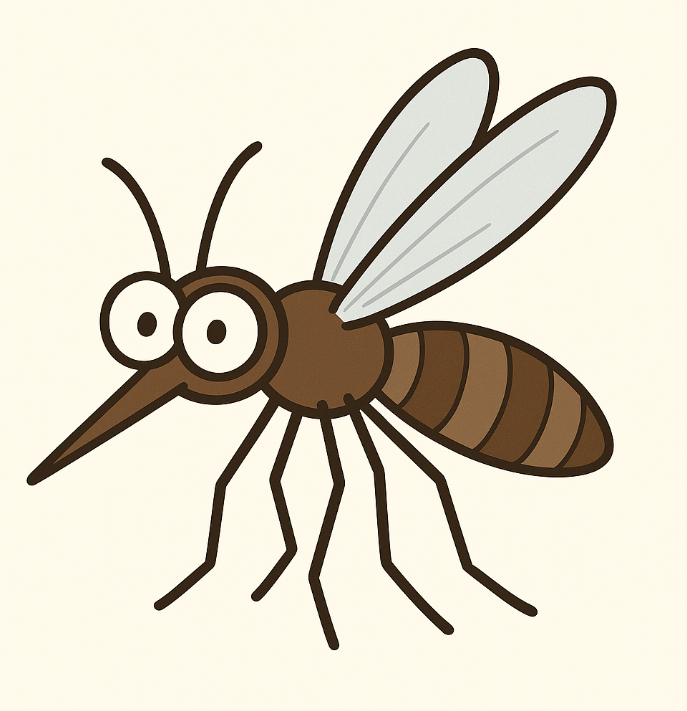
What Rift Valley Fever Teaches Us About Hidden Epidemics
In 2007, Kenya faced a Rift Valley fever (RVF) epidemic so severe it drained $32 million from its economy. Four years later, South Africa’s sheep industry lost nearly $14 million to the same disease. For decades, scientists explained these outbreaks through a neat, if chilling, story: infected mosquito eggs lie dormant during dry spells, then hatch en masse after heavy rains, unleashing epidemics.
But what if this story were incomplete? What if RVF doesn’t only lurk in the shadows, waiting for a flood to strike—but also simmers quietly, year after year, reshaping communities without the telltale explosion of deaths and headlines?
A new perspective from RVF researchers argues exactly that. And if they’re right, public health leaders, veterinarians, and policymakers may need to rethink how they fight this mosquito-borne virus.
Beyond the Classic Story
Since the 1930s, RVF has been a familiar, if frightening, guest in parts of Africa and the Middle East. The “classic model” described it as an episodic disease: years of silence, then sudden, devastating epidemics triggered by floods and mosquito hatches.
That framework gave rise to predictive models based on rainfall and climate, which remain powerful tools. But they also left blind spots. Many communities report high rates of RVF antibodies in animals, suggesting ongoing infection, despite no recorded outbreaks.
This pattern suggests a more complex phenomenon than the epidemic–interepidemic cycle.
The Spectrum: From Epidemic to Hyperendemic
The new framework describes RVF not as a binary disease, but as a spectrum of dynamics:
- Epidemic regions: Classic outbreaks after rainy seasons, where the virus may vanish during dry or cold months.
- Endemic systems: Areas where RVF lingers quietly at low levels, circulating between mosquitoes and livestock.
- Hyperendemic regions: Hot zones where RVF is always present at high levels, creating herd immunity that dampens visible outbreaks.
South Africa provides a striking example. In the Free State, researchers found the epidemic pattern: low antibody levels between outbreaks, no signs of infection for years. But in KwaZulu-Natal, where no outbreaks were reported at all, up to 80 infections per 100 cattle-years quietly accumulated, a hidden churn of viral circulation that would never trigger an epidemic alarm.
Why This Matters Now
For public health professionals, this shift isn’t just academic. It changes how we:
- Predict outbreaks: Rainfall models work for epidemic areas, but fail in hyperendemic zones where mosquitoes circulate year-round.
- Vaccinate livestock: In hyperendemic systems, steady low-level transmission builds immunity, reducing the payoff of costly mass vaccination campaigns.
- Protect people: In places where RVF simmers, thousands may be infected yearly without ever being diagnosed—creating hidden burdens of disease.
Uganda illustrates the stakes. Districts with no history of RVF outbreaks showed seroprevalence as high as 66 percent in cattle, revealing widespread but invisible transmission. Without better surveillance, entire regions could slip under the radar, leaving communities vulnerable when conditions shift toward epidemic spread.
Rethinking Reservoirs and Risks
The new model also challenges assumptions about reservoirs. Instead of a single hidden species carrying the virus, RVF may be maintained in a reservoir system—a web of livestock, wildlife, and mosquitoes that together sustain it.
That matters for control efforts. Focusing only on livestock vaccination or mosquito control might miss the bigger picture. A “One Health” approach that bridges animal health, human health, and environmental science becomes essential.
And the risks are not confined to rural Africa. The World Health Organization has listed RVF as a pathogen with pandemic potential. With climate change altering mosquito habitats and global trade moving animals across borders, understanding its quiet spread is urgent for everyone.
What’s Next for RVF Research
The researchers call for a reprioritization of RVF science:
- Longitudinal studies to track infection over time, instead of single snapshots.
- Stronger surveillance systems that can catch not only explosive outbreaks but also silent, simmering transmission.
- Integrated modeling that combines climate, livestock movement, immunity, and mosquito ecology.
- Better public health infrastructure to diagnose and respond early, especially in underserved regions.
Ultimately, they argue, understanding whether a region is experiencing an epidemic, endemicity, or hyperendemicity could transform strategies for surveillance, vaccination, and preparedness.
Closing Thoughts
For more than a century, Rift Valley fever has been cast as a sudden storm, appearing without warning and devastating herds and communities. But storms are not the only danger. Sometimes, the greater threat is the quiet flood that never recedes.
By reframing RVF as a spectrum, scientists are giving us a new lens: one that reveals hidden patterns, helps us prepare smarter, and reminds us that not all crises come with lightning and thunder. Some unfold silently, and we miss them at our peril.
Join the Conversation
- Could your region be quietly experiencing hyperendemic RVF without detection?
- How should global health systems balance resources between epidemic “hotspots” and hyperendemic “silent zones”?
- What would better One Health surveillance look like in practice for diseases like RVF?



